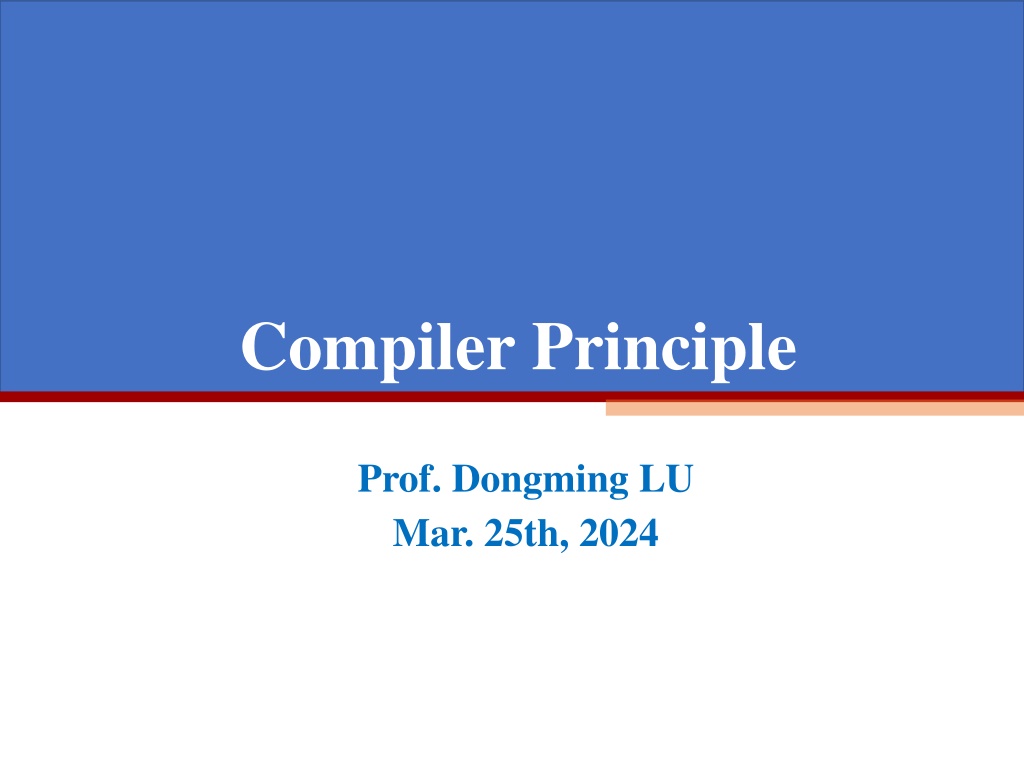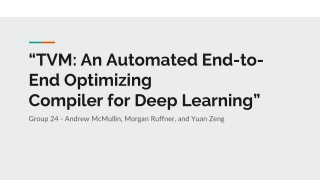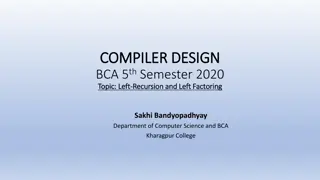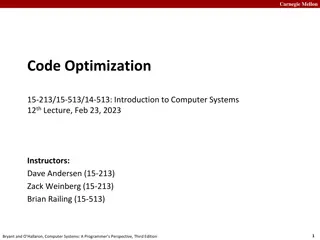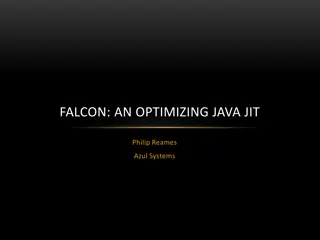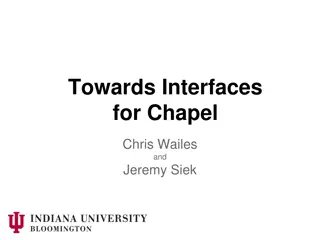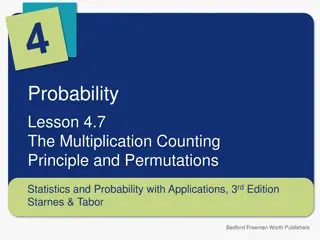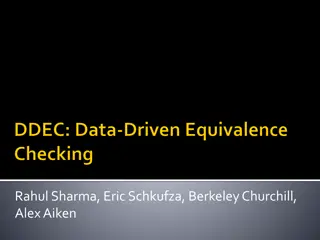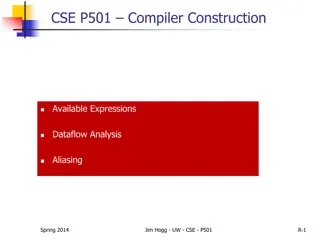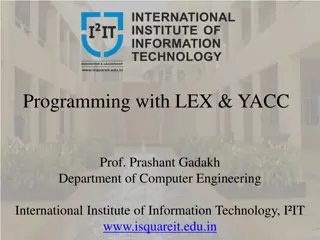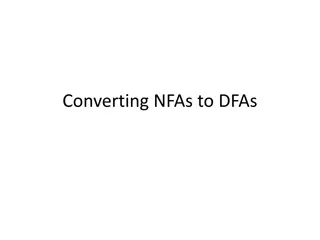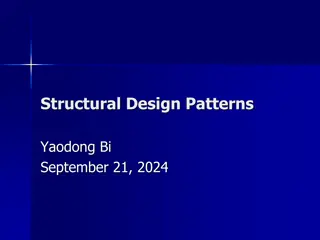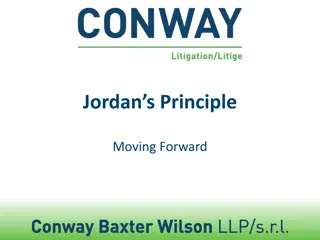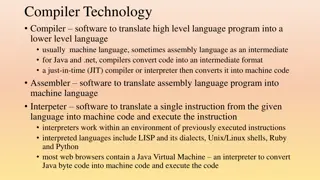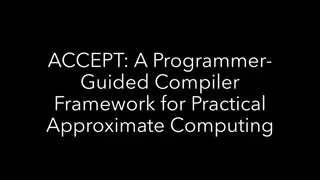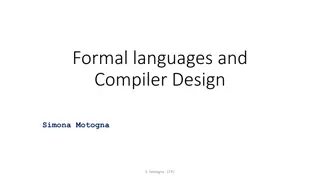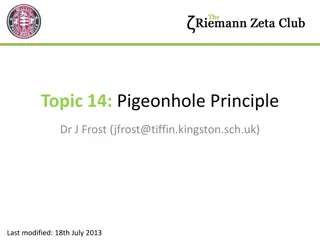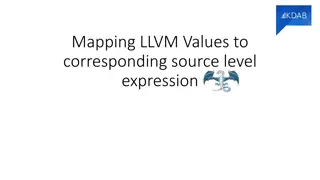Overview of Compiler Principle - Prof. Dongming LU
Introduction to compiler principles with a focus on lexical analysis, parsing, abstract syntax, semantic analysis, activation records, translating into intermediate code, and other key aspects related to bindings in the Tiger compiler. The content covers topics like semantic analysis, name spaces, type equivalence classifications, and the environment in compiler design.
Download Presentation

Please find below an Image/Link to download the presentation.
The content on the website is provided AS IS for your information and personal use only. It may not be sold, licensed, or shared on other websites without obtaining consent from the author. Download presentation by click this link. If you encounter any issues during the download, it is possible that the publisher has removed the file from their server.
E N D
Presentation Transcript
Compiler Principle Prof. Dongming LU Mar. 25th, 2024
Content 1. INTRODUCTION 2. 3. 4. 5. LEXICAL ANALYSIS PARSING ABSTRACT SYNTAX SEMANTIC ANALYSIS 6. 7. ACTIVATION RECORD TRANSLATING INTO INTERMEDIATE CODE 8. OTHERS
5.2 BINDINGS FOR THE Tiger COMPILER What is a binding? What should a symbol table be filled?
BINDINGS FOR THE Tiger COMPILER Tiger has two separate name spaces: One for types The other for functions and variables All Types: The primitive type: int, string Other types constructed using records and arrays from other types. The Ty_array or Ty_record object : Carry the implicit piece of information: the address of the object itself
BINDINGS FOR THE Tiger COMPILER Every record type expression creates a new (and different ) record type. Let type a= {x:int; y:int } type b= {x:int; y:int } var i: a:= var j: b:= . Int i:= j end It is illegal in Tiger. Let type a= {x:= int; y:int } type c = a; var i: a:= var j: c:= . Int i:= j end It is legal in Tiger.
Classification of type equivalence Structural equivalence Two types are the same if and only if they have the same structure. Name equivalence Two type expressions are equivalence if and only if they are either the same simple type or are the same type name. Declaration equivalence t2 = t1; are interpreted as establishing type aliases, rather than new types.
Classification of type equivalence t1 = int; t2 = int; The types t1 and t2 are not equivalence and are also not equivalent to int. This is very strong sort of type equivalence.
ENVIRONMENT The table type of Symbol module provides mappings from symbols to bindings. Let type a = int var a: a := 5 var b: a := a in b+a end Type environment Value environment
ENVIRONMENT typedef struct E_enventry_ *E_enventry Struct E_enventry_ {enum { E_varEntry, E_funEntry} kind; union { struct { Ty_ty ty;} var; struct { Ty_tyList formals; Ty_ty result;} fun; } u; } E_enventry E_VarEntry(Ty_ty ty); E_enventry E_FunEntry(Ty_tyList formals, Ty_ty result); S_table E_base_tenv(void); /*Ty_ty environment*/ S_table E_base_venv(void); /*E-enventry environment*/
5.3 TYPE-CHECKING EXPRESSIONS Performing semantic analysis of abstract syntax
Four functions over syntax trees Struct expty transVar(S_table venv, S_table tenv, A_var v); Struct expty transExp(S_table venv, S_table tenv, A_exp a); Void transDec(S_table venv, S_table tenv, A_dec d); Ty_ty transTY( S_table tenv, A_ty a); The type checker is a recursive function of the abstract syntax tree. The result is an expty.
struct expty transExp(S_table venv, S_table tenv, A_exp a){ switch(a->kind){ case A_opExp:{ A_oper oper=a->u.op.oper; struct expty left=transExp(venv,tenv,a->u.op.left); struct expty right=transExp(venv,tenv,a->u.op.right); if (oper==A_plusOp){ if (left.ty->kind!=Ty_int) EM_error(a->u.op.left->pos, integer required ); if (right.ty->kind!=Ty_int) EM_error(a->u.op.right->pos, integer required ); return expTy(NULL, Ty_int()); } } } assert(0) }
TYPE-CHECKING VARIABLES,SUBSCRIPTS, AND FIELDS struct expty transVar(S_table venv, S_table tenv, A_var v){ switch(v->kind){ case A_simpleVar:{ E_enventy x= S_look(venv, v->u.simple) if (x && x->kind==E_varEntry) return expTy(NULL actual_ty(x-u.var.ty)); else { EM_error(v->pos, undefined variable %s , S_name(v->u.simple)); return expTy(NULL, Ty_int());} } case A_fieldVar: }
5.4 TYPE-CHECKING DECLARATION Environments are constructed and augmented
Translate declarations struct expty transExp(S_table venv, S_table tenv, A_exp a){ switch(a->kind){ case A_letExp:{ struct expty exp; A_declist d; S_beginScope(venv); S_beginScope(tenv); for (d=a->u.let.decs; d; d=d->tail) transDec(venv, tenv, d->head); exp=transexp(venv,tenv,a->u.let.body); S-endScope(tenv); S-endScope(venv); return exp; }
VARIABLE DECLARATION Void transDec(S_table venv, S_table tenv, A_dec d) { switch (d->kind) { case A_varDec: { struct expty e =transExp(venv, tenv, d->u.var.init); S_enter(venv, d->u.var.var, E_VarEntry(e.ty)); } } Example: var x: type-id := exp
TYPE DECLARATION Void transDec(S_table venv, S_table tenv, A_dec d) { . switch (d->kind) { case A_typeDec: { S_enter(tenv, d->u.type->head->name, transTy(tenv, d->u.type->head->ty)); } } Example: type type-id := typeExp
FUNCTION DECLARATION Void transDec(S_table venv, S_table tenv, A_dec d) { switch (d->kind) { case A_functionDec: { A_fundec f=d->u.function->head; Ty_ty resultTy=S_look(tenv,f->result); Ty_tyList formalTys=makeformalTyList(tenv,f->params); S_enter(venv,f->name,E_FunEntry(formalTys,resultTy)); S_beginScope(venv); { A_filedList l; Ty_tyList t; for (l=f->params, t=formalTys; l; l=l->tail, t=t->tail) S_enter(venv, l->head->name, E_VarEntry(t->head)); } transExp(venv, tenv, d->u.function->body); S_endScope(venv); break; }
RECURSIVE DECLARATIONS Encounter undefined type or function identifiers transTy for recursive record types trandExp(body) for recursive functions Example: type list = {first: int, rest :list} S_enter(tenv, name, Ty_Name(name, NULL)) Put all the headers in the environment first.
